#how to start a keto diet for beginners
Explore tagged Tumblr posts
Text
Embarking on a Journey to Health: A Beginner's Guide to Starting a Keto Diet
Introduction:
***Affiliate disclaimer*** This article contains affiliate links, if you click on the link and purchase the product I will receive a small commission form the product owner this is at no cost to you thank you Victor :)
Embarking on a journey towards a healthier lifestyle can be both exciting and overwhelming. Among the plethora of diet trends, the ketogenic diet has gained significant popularity for its potential to promote weight loss and improve overall health. However, starting a keto diet requires careful planning and understanding of its principles. In this comprehensive guide, we will delve into the basics of the ketogenic diet, providing you with practical tips and insights to kickstart your journey towards a healthier you.

Understanding the Keto Diet:
The ketogenic diet, often referred to as keto, is a high-fat, moderate-protein, and low-carbohydrate eating plan designed to induce a metabolic state called ketosis. In ketosis, the body switches from using carbohydrates as its primary fuel source to burning fat for energy. By drastically reducing carbohydrate intake and increasing fat consumption, the keto diet aims to promote fat loss, improve insulin sensitivity, and enhance overall metabolic health.
Getting Started:
Before diving into the keto lifestyle, it's essential to educate yourself about its basic principles and potential benefits and risks. Consult with a healthcare professional or registered dietitian to ensure that the keto diet is suitable for your individual needs and health status. Once you've received the green light, it's time to embark on your keto journey with confidence and determination.
Transitioning to Ketosis:
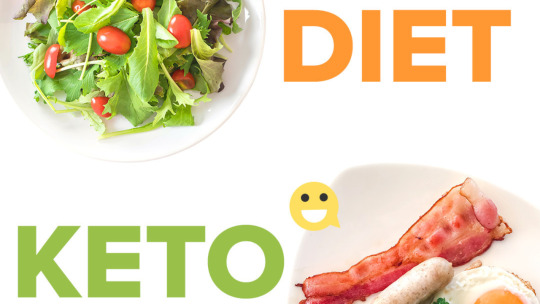
Transitioning to ketosis involves drastically reducing your carbohydrate intake while increasing your consumption of healthy fats and moderate amounts of protein. Aim to consume less than 50 grams of net carbohydrates per day, focusing on nutrient-dense, whole foods such as meat, fish, eggs, nuts, seeds, avocados, and low-carb vegetables. Be mindful of hidden sugars and processed carbohydrates lurking in packaged foods, sauces, and condiments.
Meal Planning and Preparation:
Meal planning is essential for success on the keto diet, as it helps you stay on track and avoid temptations. Plan your meals and snacks in advance, focusing on balanced combinations of protein, fats, and low-carb vegetables. Experiment with keto-friendly recipes and meal ideas to keep your taste buds excited and satisfied. Batch cooking and meal prepping can save time and effort during busy weekdays, ensuring that healthy keto options are readily available when hunger strikes.
Navigating Potential Challenges:

Starting a keto diet may come with its fair share of challenges, including keto flu symptoms, cravings, and social pressures. Stay hydrated, replenish electrolytes, and consume adequate sodium, potassium, and magnesium to alleviate keto flu symptoms such as fatigue, headaches, and muscle cramps. Find creative ways to satisfy cravings for sweets and carbohydrates, such as incorporating keto-friendly sweeteners and indulging in low-carb treats in moderation. Communicate your dietary preferences and goals with friends and family, and seek support from online communities and forums to stay motivated and accountable.
Monitoring Progress and Adjustments:
Tracking your progress is crucial for staying motivated and making necessary adjustments along the way. Keep a food journal or use mobile apps to monitor your daily food intake, macronutrient ratios, and physical activity levels. Pay attention to how your body responds to the keto diet, including changes in energy levels, appetite, and weight loss progress. Adjust your dietary approach as needed, making modifications to your macronutrient ratios, calorie intake, and meal timing to optimize your results and overall well-being.
Maintaining Long-Term Success:
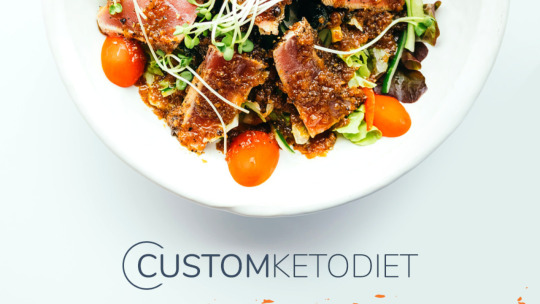
Achieving long-term success on the keto diet requires commitment, consistency, and a balanced approach to nutrition and lifestyle. Embrace the journey as a learning experience, and focus on building sustainable habits that support your health and well-being in the long run. Be patient with yourself, celebrate your victories, and learn from setbacks along the way. Remember that the keto diet is just one tool in your toolbox for achieving optimal health, and it's essential to listen to your body and make adjustments as needed to support your individual needs and goals.
***Affiliate disclaimer*** This article contains affiliate links, if you click on the link and purchase the product I will receive a small commission form the product owner this is at no cost to you thank you Victor :)
Conclusion:
Starting a keto diet is an empowering step towards reclaiming control of your health and well-being. By understanding the principles of the ketogenic diet, planning your meals mindfully, and staying committed to your goals, you can embark on a transformative journey towards a healthier, happier you. Embrace the process with an open mind and a willingness to learn and adapt, and you'll be well on your way to achieving lasting success on your keto journey.
#keto diet#how to start keto#keto#keto diet for beginners#how to start keto diet#ketogenic diet#how to do keto#how to start ketogenic diet#how to eat keto#start keto#how to start the keto diet#how to do a keto diet#diet#keto diet plan#how to start a keto diet#low carb diet#tips on how to start a keto diet#how to start a keto diet for beginners#keto recipes#keto diet explained#how to#keto how to#how to start keto diet for beginners#starting keto
0 notes
Text
Here's a breakdown of Intermittent Fasting and the Ketogenic Diet: Intermittent Fasting (IF) What it is: Intermittent fasting involves cycling between periods of eating and fasting.
click here
The most common methods include the 16/8 method, where you fast for 16 hours and eat during an 8-hour window, and the 5:2 method, where you consume a very low-calorie diet for two non-consecutive days a week and eat normally on the other five days. Benefits: Weight loss Improved insulin sensitivity Enhanced mental clarity Cellular repair and autophagy Ketogenic Diet (Keto) What it is:
The ketogenic diet is a high-fat, low-carbohydrate diet that aims to get your body into a state of ketosis, where it burns fat for fuel instead of carbohydrates. Benefits: Weight loss Improved mental focus Stable blood sugar levels May help in managing certain medical conditions like epilepsy Combining IF and Keto How it works: Both intermittent fasting and the ketogenic diet aim to shift your body's metabolism towards fat burning.
Click here
Combining them can amplify the benefits of each. Considerations: Start gradually to allow your body to adapt Monitor your nutrient intake to ensure you're getting all the essential vitamins and minerals Consult a healthcare provider, especially if you have pre-existing medical conditions Benefits of Combining: Accelerated weight loss Enhanced mental clarity Improved metabolic health Precautions Not suitable for everyone, especially those with certain medical conditions, pregnant or breastfeeding women, and children. Combining intermittent fasting (IF) with the ketogenic diet can offer synergistic benefits, but it's important to approach it carefully to ensure you're doing it in a healthy and sustainable way. Here are some tips for successfully combining the two: Start Slowly Ease into Fasting: If you're new to intermittent fasting, start with a shorter fasting window, such as 12 hours, and gradually work your way up. Adapt to Keto First: Before incorporating fasting, give yourself time to adapt to the ketogenic diet
. This will make the transition easier. Plan Your Meals High-Quality Fats: Focus on getting your fats from high-quality sources like avocado, olive oil, and fatty fish. Adequate Protein: Ensure you're getting enough protein to maintain muscle mass. Low-Carb Veggies: Fill up on low-carb vegetables to get essential nutrients without going over your carb limit. Monitor Nutrient Intake Micronutrients: Pay attention to essential vitamins and minerals. Consider taking supplements if necessary.
Hydration: Fasting and ketosis can both lead to dehydration. Make sure to drink plenty of water and consider adding electrolytes. Listen to Your Body Hunger Cues: Don't ignore signs of extreme hunger or fatigue. These could be indicators that you need to adjust your approach. Rest and Recovery: Make sure you're getting enough sleep and not over-exerting yourself physically.
Consult a Healthcare Provider Medical Supervision: If you have any pre-existing health conditions or are taking medication, consult a healthcare provider before combining IF and keto. Regular Check-ups: Consider regular blood tests and check-ups to monitor how the combined approach is affecting your health. Experiment and Tweak Adjust Fasting Windows: You may need to experiment with different fasting windows to see what suits you best.
Carb Cycling: Some people incorporate periodic higher-carb days to make the diet more sustainable. Be Mindful of Exercise Timing: Try to time your workouts around your eating windows.
Type of Exercise: While high-intensity workouts may be challenging when fasting, lighter exercises like walking or yoga can be beneficial. Combining intermittent fasting with the ketogenic diet can be a powerful way to achieve your health and fitness goals, but it's crucial to do it in a balanced and informed manner. Always consult a healthcare provider for personalized advice.
#keto diet#keto#how to start keto#ketogenic diet#keto diet for beginners#how to start keto diet#diet#how to do a keto diet#how to do keto#how to start a keto diet#how to start ketogenic diet#tips on how to start a keto diet#low carb diet#how to start a keto diet for beginners#keto diet plan#keto diet how to start#how to start the keto diet#how to eat keto#how to start keto diet step by step#how to start keto diet for beginners
1 note
·
View note
Text
Eliminate Belly Fat for Good with Lean Belly 3X: A Review
I. Introduction
Belly fat, also known as abdominal obesity, is a common health concern that can have serious negative consequences on overall health. Excess belly fat has been linked to an increased risk of numerous health problems, including heart disease, diabetes, and some cancers. Belly fat is often difficult to lose, but it is important to take steps to reduce it in order to improve overall health and reduce the risk of these serious health conditions.
II. What is Lean Belly 3X?
Lean Belly 3X is a dietary supplement that is claimed to help reduce belly fat and improve overall health. It contains a blend of natural ingredients that are said to help boost weight loss and reduce fat, particularly in the abdominal area. Lean Belly 3X is marketed as an effective solution for those looking to lose belly fat and improve their overall health.
III. Benefits of using Lean Belly 3X
Weight loss: Lean Belly 3X is claimed to help boost weight loss by reducing fat, particularly in the abdominal area.
Reduced belly fat: As its name suggests, Lean Belly 3X is specifically formulated to help reduce belly fat.
Improved overall health: By reducing excess belly fat, Lean Belly 3X may help improve overall health and reduce the risk of certain health conditions such as heart disease, diabetes, and certain cancers.
Natural ingredients: Lean Belly 3X is made with natural ingredients, which may appeal to those looking for a more natural solution for weight loss and fat reduction.
IV. User reviews and testimonials
It is always a good idea to read reviews and testimonials from users before trying a new product, as this can give you an idea of what to expect and help you make an informed decision. However, it's important to keep in mind that individual results may vary and what works for one person may not work for another.
When it comes to Lean Belly 3X, there are a variety of user reviews and testimonials available online. Some users report experiencing significant weight loss and reduction in belly fat after using the supplement, while others have not noticed any significant changes. As with any supplement, it is important to remember that results may vary and it may not work for everyone. It is always a good idea to speak with a healthcare provider before starting any new supplement to ensure it is safe and appropriate for you.
V. Conclusion
In conclusion, Lean Belly 3X is a dietary supplement that is claimed to help reduce belly fat and improve overall health. It contains a blend of natural ingredients that are said to help boost weight loss and reduce fat, particularly in the abdominal area. While some users have reported positive results, such as weight loss and reduced belly fat, it's important to remember that individual results may vary and more research is needed to confirm the effectiveness of Lean Belly 3X. It is always a good idea to speak with a healthcare provider before starting any new supplement to ensure it is safe and appropriate for you. In addition to using supplements, it is important to maintain a healthy diet and regular exercise to achieve optimal weight loss and health results.
#keto diet#ketogenic diet#low carb diet#dr berg ketogenic diet#diet#que puedo comer en la dieta keto#easy keto diet recipes#keto diet for elderly woman#keto diet meal prep#keto diet breakfast#que no puedo comer n la dieta keto#keto diet plan#keto diet for beginners#keto diet for beginners meal plan#keto diet practitioners#how to start keto diet for beginners#how does keto diet#how to start keto diet#ketogenic diet dr berg#how does keto diet work
3 notes
·
View notes
Text
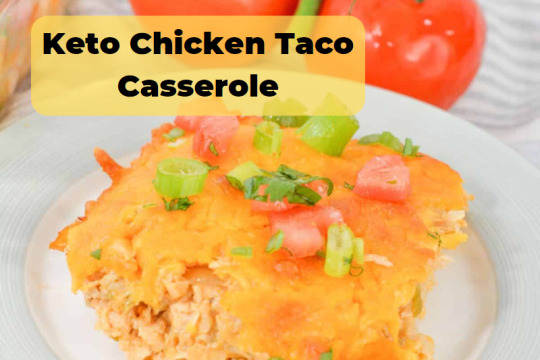
Try this family-friendly weekday recipe for chicken taco casserole, which is keto-friendly. This dish, made with shredded chicken, taco seasoning, and a variety of delectable toppings, is sure to please everyone.
Why You'll Love This Recipe? This recipe combines tasty, whole ingredients like shredded rotisserie chicken and shredded cheese with great flavors.
Furthermore, it can be altered! By adding your own toppings, you may make this dish uniquely yours, or let everyone at the dinner table choose their own.
I therefore highly recommend my keto chicken taco casserole if you're looking for a quick and simple supper that will satisfy everyone.
Learn how you prepare this delicious keto at home.
#keto#diet plan#keto recipes#keto cooking channel#ketofood#keto diet#low carb#ketoweightloss#weight loss recipes#lose weight#clean eating#losing weight#how to start keto#lazy keto diet#lazy keto recipes#keto chicken#keto diet for beginners#keto diet for weight loss
5 notes
·
View notes
Text
Simple meal plan to lose weight

Losing weight can often seem like a daunting task, but with a well-designed simple meal plan, achieving your goals becomes more manageable and sustainable. In this article, we'll delve into the essentials of creating an effective meal plan tailored for weight loss.
Introduction
Embarking on a weight loss journey requires a clear strategy, and a simple meal plan serves as the cornerstone of this strategy. By structuring your meals around healthy choices and portion control, you can achieve sustainable weight loss while nourishing your body.
Understanding Weight Loss Basics
To effectively lose weight, you must create a caloric deficit, meaning you burn more calories than you consume. This deficit can be achieved through a combination of diet and exercise. However, diet plays a crucial role, and a simple meal plan helps you manage your calorie intake.
Macronutrient Balance for Optimal Fat Loss
In addition to managing calories, it's important to focus on the quality of your food. A balanced meal plan should include adequate protein, healthy fats, and complex carbohydrates. Protein supports muscle growth and repair, while fats and carbs provide sustained energy.
Designing Your Simple Meal Plan
Setting realistic goals is key to success. Aim to lose weight gradually, typically 1-2 pounds per week, which is both safe and sustainable. Choose nutrient-dense foods such as lean proteins, whole grains, fruits, and vegetables to fuel your body.
You may have a look to this plan for better results.
Choosing Nutrient-Dense Foods
Opt for whole, minimally processed foods that are rich in vitamins, minerals, and fiber. These foods not only keep you full longer but also provide essential nutrients that support overall health and metabolism.
Meal Prep Tips for Success
Meal prep is a game-changer when it comes to sticking to a meal plan. Dedicate a day each week to batch cooking meals and portioning them into containers. This saves time and ensures you have healthy options readily available.
Batch Cooking for Efficiency
Prepare large quantities of staples like grilled chicken, brown rice, and roasted vegetables. Use these as building blocks for various meals throughout the week, such as salads, stir-fries, and wraps.
Portion Control Techniques
Invest in portion-control tools like measuring cups and food scales to accurately measure servings. This helps prevent overeating and keeps your calorie intake in check.
Sample Meal Plan
Let's explore a sample meal plan for a day that promotes weight loss:
Breakfast Ideas:
Greek yogurt with berries and nuts
Oatmeal topped with sliced bananas and a drizzle of honey
Lunch Options:
Grilled chicken salad with mixed greens and vinaigrette
Quinoa and vegetable stir-fry
Dinner Recipes:
Baked salmon with roasted sweet potatoes and steamed broccoli
Lentil soup with a side of whole-grain bread
Healthy Snack Choices:
Hummus with carrot sticks
Apple slices with almond butter
Incorporating Variety and Flavor
Maintaining interest in your meals is crucial for long-term adherence to a meal plan. Experiment with different cuisines and cooking methods to keep things exciting.
This plan may guide you for better results.
Experimenting with Different Cuisines
Explore international cuisines like Mediterranean, Asian, or Mexican, which often feature flavorful dishes made from wholesome ingredients.
Using Herbs and Spices for Taste
Enhance the taste of your meals without adding extra calories by using herbs, spices, and citrus zest. Fresh basil, cilantro, cumin, and lemon juice can transform a simple dish.
Hydration and Its Role in Weight Loss
Staying hydrated is essential for weight loss. Aim to drink plenty of water throughout the day, as it helps boost metabolism and reduces hunger.
Choosing Healthy Beverages
Limit sugary drinks and opt for water, herbal tea, or infused water with citrus slices and mint. Avoid excess caffeine and alcohol, as they can interfere with your weight loss efforts.
Tracking Progress
Keep track of your meals, snacks, and beverages in a food journal. This helps you identify patterns, track your progress, and make necessary adjustments to your meal plan.
Monitoring Weight Changes and Adjustments
Regularly weigh yourself and assess how your body is responding to the meal plan. Adjust portion sizes or food choices as needed to continue progressing towards your weight loss goals.
Overcoming Challenges
Cravings and social situations can present challenges during your weight loss journey. Plan ahead by having healthy alternatives on hand and practicing mindful eating in social settings.
Dealing with Cravings and Temptations
Find healthier substitutes for your favorite indulgences, such as dark chocolate instead of milk chocolate or air-popped popcorn instead of chips.
Managing Social Situations
Communicate your goals with friends and family to gain support. Offer to bring a healthy dish to gatherings or focus on socializing rather than solely on the food.
Conclusion
Achieving weight loss through a simple meal plan is not only feasible but also rewarding. Celebrate your milestones along the way and embrace these healthy eating habits for long-term success. By prioritizing nutrient-dense foods and mindful eating, you'll not only shed pounds but also improve your overall well-being. You can Start your journey towards a healthier future today!
Disclosure:
Some of the links in this article are affiliate links, which means I may earn a commission if you purchase through those links.
#Simple meal plan to lose weight#Instant Pot Keto#fat loss#keto diet#keto diet plan for beginners#How to Start a Keto diet
0 notes
Text
#keto diet#keto meal plan#ketogenic diet#keto recipes#how to start keto#keto guide for beginners#keto tips#low-carb diet#weight loss on keto#keto
0 notes
Text
#keto diet for beginners#how to start eating healthy#healthy.eating tips#diet tips#lose weight pills#nutritionist near me#nutritionists#diet coke#diet coca-cola#diet pills#meaning of deity
0 notes
Text
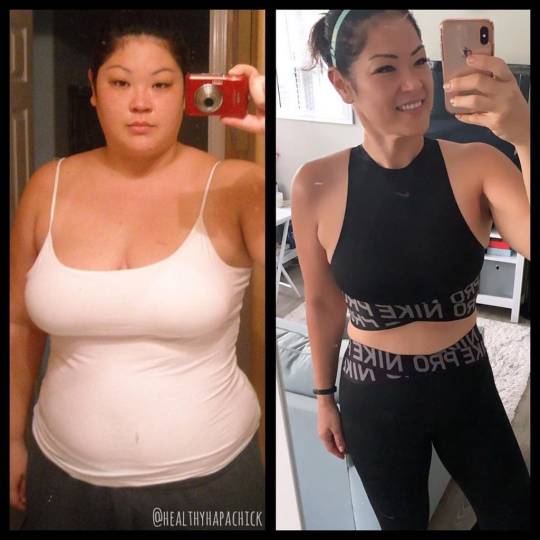
#keto diet#keto#keto diet for beginners#keto diet plan#ketogenic diet#diet#keto diet explained#keto diet plan for weight loss#keto diet results#keto diet meal plan#keto meals#keto food#what is keto diet#what is a keto diet#keto diet recipes#low carb diet#keto recipes#what is the keto diet#how to start keto diet#foods to eat on keto diet#what is keto#is keto safe#foods i can eat on a keto diet#keto weight loss#keto bread#diet keto
0 notes
Text
Transform Your Health with Top Keto Programs!
Looking to lose weight, boost energy, and improve your health? Discover the best keto programs with comprehensive meal plans, downloads, and video courses. Start your journey today!

The Ultimate Keto Meal Plan
Simplify your keto journey with The Ultimate Keto Meal Plan. Complete with recipes, a member area, and video courses for an easy and effective diet plan.
[The Ultimate Keto Meal Plan] ->
The Keto40 Program
Transform your body in 40 days with The Keto40 Program. Detailed meal plans, recipes, and video tutorials to help you reach your keto goals.
[The Keto40 Program]->
Carb Cycling For Weight Loss
Optimize weight loss with Carb Cycling For Weight Loss. Includes downloadable guides and video lessons to master carb cycling on a keto diet.
[Carb Cycling For Weight Loss]->
30-Day Keto Challenge - High Converting MEGA Keto Bundle
Jumpstart your keto journey with the 30-Day Keto Challenge. Includes meal plans, recipes, and exclusive video content for a successful month of ketosis.
[30-Day Keto Challenge]->
Start your keto journey with these comprehensive programs designed to help you achieve your health and wellness goals. Act now and transform your life
2 notes
·
View notes
Text
How To Start a Keto Diet: Click here to get my diet plan: https://bit.ly/3EHC5zf Welcome to our guide on How to Start a Keto Diet as a Beginner! Are you new to the keto lifestyle and wondering where to begin? You've come to the right place! This video will walk you through the essential steps on how to start a keto diet. Let's dive in! Step 1: Understand the Basics The ketogenic diet is a low-carb, high-fat diet. The goal is to shift your body into a state of ketosis, where it burns fat for fuel. Step 2: Know Your Macros Carbs: 5-10% Proteins: 20-25% Fats: 65-75% Step 3: Grocery Shopping Stock up on keto-friendly foods like avocados, meats, and leafy greens. Avoid sugar and starchy foods. Step 4: Meal Planning Plan your meals around your macros. Use keto recipes to keep things interesting. Step 5: Track Your Progress Use apps or a food diary to track your macros and calories. Monitor how you feel and adjust as needed. Key Takeaways Learning how to start a keto diet is simple if you follow these steps. Consistency is key. Enjoy the journey and the new, healthier you! We hope this video helps you understand how to start a keto diet as a beginner. Don't forget to like, share, and subscribe for more keto tips!
#keto diet#keto#how to start keto#ketogenic diet#keto diet for beginners#how to start keto diet#diet#how to do a keto diet#how to do keto#how to start a keto diet#how to start ketogenic diet#tips on how to start a keto diet#low carb diet#how to start a keto diet for beginners#keto diet plan#keto diet how to start#how to start the keto diet#how to eat keto#how to start keto the ultimate beginners guide#how to start keto diet step by step
0 notes
Text
what is the keto diet plan for beginners?
#1 Recommendation Here
The keto diet is a low-carb, high-fat diet that has become popular in recent years. It is designed to help people lose weight, reduce inflammation, and improve overall health. For beginners, the keto diet can be confusing and intimidating. But with the right information and guidance, it can be an effective way to achieve your health goals.
This article will provide an overview of the keto diet plan for beginners, including what foods to eat and how to get started. With this information, you'll be able to make an informed decision about whether or not the keto diet is right for you.
#1 Recommendation Here

#ketodiet#diet#ketoweightloss#keto#ketotransformation#ketogenic#ketofam#ketocommunity#low carb#keto recipes
3 notes
·
View notes
Text
The Top 5 Keto Tips Every Beginner Needs to Know
Starting a keto diet can be overwhelming. After all, there’s a lot of information to take in and it can be difficult to know where to start. That’s why I’ve created this blog post to provide you with the top 5 keto tips every beginner needs to know. From understanding the basics of the diet, to planning your meals and stocking your pantry, these tips will help you get started on the right track so you can achieve your health and wellness goals.
1) Carb Counting is Key
One of the most important tips for starting a ketogenic diet is understanding how to count your carbs. This is key to staying in ketosis and burning fat as your primary fuel source. When it comes to counting carbs, it is important to know that each gram of carbohydrate contains 4 calories. The recommended daily intake for carbohydrates on a ketogenic diet is usually between 20–50 grams. To keep track of your carb intake, you can use an app like MyFitnessPal or a tracking website like Cronometer to record what you eat. You can also use food labels to understand the carb content of foods. Knowing how much carbs you are consuming will help you stay within your limits and get into ketosis more quickly.
2) Get Plenty of Fat
When following the ketogenic diet, it’s important to get enough fat in your daily meals. Eating a high-fat diet is essential to achieving the state of ketosis, which is when your body switches from burning carbohydrates for energy to burning fat. Fats should make up roughly 75% of your calories while on the keto diet.
Good sources of fat include olive oil, avocados, coconut oil, nuts, eggs, and fatty fish like salmon. If you’re eating out at restaurants, look for dishes that are cooked with butter or oil and that are higher in fat than carbs or protein.
Including plenty of fat in your daily meals can help you stay in ketosis, keep you feeling full and satisfied, and help you reach your weight loss goals. Make sure to read nutrition labels carefully and be mindful of how much fat you’re consuming each day.
3) Eat When You’re Hungry
One of the most important tips for beginners on the ketogenic diet is to eat when you’re hungry. When you’re first starting out on the keto diet, it can be tempting to stick to a strict eating schedule that you’ve pre-set. However, your body is much better at regulating its hunger and satiety cues than any external source could ever be.
Therefore, it’s important to listen to your body and eat when you feel hungry. Eating when you’re hungry will help you to maintain your energy levels, as well as prevent cravings from developing later on. Also, make sure to eat slowly and stop when you feel full. This will help your body to better understand its hunger and satiety signals.
Additionally, it’s also important to avoid skipping meals. Skipping meals can lead to extreme hunger and cravings, which can lead to overeating or making poor food choices. Make sure to keep plenty of healthy snacks on hand in case of emergency, like nuts or hard-boiled eggs.
Remember, while it’s important to stay consistent with your meals, it’s equally important to ensure that you’re eating when you’re hungry and not forcing yourself to eat when you’re not. Eating when you’re truly hungry is key to helping you maintain consistent energy levels and prevent cravings throughout the day.
4) Drink Lots of Water
Drinking plenty of water is an essential part of any diet, and the keto diet is no exception. Staying hydrated is important for overall health, as well as helping to regulate hunger levels and managing cravings. It’s recommended that adults drink at least 2–3 liters of water per day. For those following a keto diet, however, it’s especially important to drink even more water than that. This is because the body can become dehydrated more quickly when carbohydrates are limited and metabolic waste products, known as ketone bodies, are produced.
When drinking water on a keto diet, aim to consume a minimum of 3–4 liters per day. Additionally, it’s helpful to spread out your water intake throughout the day, rather than drinking it all at once. Doing so can help prevent dehydration and keep you feeling energized and alert throughout the day.
In addition to plain water, you can also get hydrated with other sugar-free drinks, such as unsweetened herbal teas, sugar-free sports drinks, and sugar-free tonic water. Avoiding sodas, juices, and other sweetened beverages is key, however, as they contain added sugars and carbohydrates that can easily knock you out of ketosis.
By making sure to drink plenty of water on the keto diet, you can help keep your body hydrated, regulate hunger levels, reduce cravings, and stay energized. So make sure to drink up!
5) Avoid Processed Foods
When it comes to following a ketogenic diet, one of the most important tips is to avoid processed foods. Processed foods are typically high in carbohydrates, which can make them difficult to fit into your keto macros. Processed foods also often contain added sugars and other unhealthy ingredients, which can make it difficult to stick to your diet in the long-term.
Therefore, it’s best to avoid processed foods as much as possible when starting a keto diet. Stick to whole, unprocessed foods such as meats, fish, eggs, nuts, seeds, vegetables, and healthy fats like olive oil and avocado. These foods are naturally low in carbohydrates and provide plenty of nutrition without compromising on flavor.
If you’re having a hard time avoiding processed foods, try looking for recipes that use real, whole ingredients instead. You may be surprised at how tasty these dishes can be! Additionally, you can look for healthier versions of your favorite processed snacks such as nut bars or kale chips.
Finally, if you do find yourself eating processed foods occasionally, make sure to read the label and check the carb count. This will help ensure you’re not exceeding your macros and derailing your progress.
By avoiding processed foods and opting for whole, unprocessed foods instead, you’ll find it easier to stick with a keto diet for the long-term.
If you want to learn my #1 way to master the keto diet, click here now.
#thin$p0#ana trigger#tw ana diary#tw ed diet#ana eating#disordered eating mention#ed meals#mealsp0#mealspø#ed ednotsheeran restriction#ed but not sheeran#tw ed in the tags#eating disoder trigger warning#disordered eating in tags#disordered eating thoughts#lose weight fast#low cal restriction#low res#weight loss motivation#weight loss#low cal diet#low calorie#low cal snacks#food restriction#tw restriction#high restriction#restructuring#skins uk#tw weight#i wanna be weightless
5 notes
·
View notes
Video
youtube
Intermittent Fasting and Keto: Should You Combine Them? 🌟 Learn More About the Custom 8-Week Keto Diet Plan 🌟 👉 Discover your own customized Keto diet plan for effective weight loss and improved health. 🔗 Click here to get started https://linktw.in/IDoNAz ---------------------- 🌟 Learn More About the Smoothie Diet 🌟 👉 Discover how delicious, easy-to-make smoothies can help you lose weight rapidly, boost your energy, and improve your health. 🔗 Click here to get started: https://tinyurl.com/2ak4gsuo Are you wondering if combining intermittent fasting and the keto diet is the secret to faster weight loss and better health? In this video, we’ll explore the powerful synergy between intermittent fasting and keto and how it can enhance fat burning, improve energy, and even deepen ketosis. Learn about the key benefits of intermittent fasting, why it works so well with the keto diet, and how to get started with intermittent fasting for beginners. We’ll also discuss common challenges like maintaining consistency and achieving optimal intermittent fasting results. Plus, find out how to plan your meals effectively with intermittent fasting with keto diet tips and whether this combination is right for you. Join us to uncover the science behind intermittent fasting and ketones, the best fasting schedules, and practical strategies for success!
0 notes
Text
Keto Diet for Beginners: A Step-by-Step Guide to Starting and Succeeding

Are you considering embarking on a keto diet? The ketogenic diet, or keto diet for short, has gained significant popularity in recent years due to its potential for weight loss and other health benefits. In this comprehensive guide, we will walk you through the essential steps to starting and succeeding on a keto diet. From understanding the basics to managing potential side effects, we’ve got you covered.
1. Understanding the Keto Diet
Before diving into the specifics, it’s crucial to grasp the fundamentals of the keto diet. The primary goal of this diet is to shift your body into a state of ketosis, where it primarily burns fat for fuel instead of carbohydrates. This metabolic state is achieved by drastically reducing your carbohydrate intake and increasing your consumption of healthy fats.
1.1 What Can You Eat on a Keto Diet?
On a keto diet, your meals should primarily consist of:
Healthy fats: Avocado, olive oil, coconut oil, and butter.
High-quality proteins: Meat, poultry, fish, and eggs.
Non-starchy vegetables: Leafy greens, cruciferous vegetables, and zucchini.
Nuts and seeds: Almonds, walnuts, chia seeds, and flaxseeds.
It’s essential to avoid or limit foods that are high in carbohydrates, such as grains, legumes, fruits, and sugary treats.
— >>Get Your Customized Keto Diet Plan Here!<< —
1.2 Benefits of a Keto Diet
Apart from weight loss, a keto diet may offer several other benefits:
Improved mental clarity and focus.
Increased energy levels.
Reduced inflammation.
Better blood sugar control.
Keep in mind that individual results may vary, and it’s always advisable to consult with a healthcare professional before starting any new diet.
2. Preparing for Your Keto Journey
Embarking on a keto diet requires some preparation to set yourself up for success. Consider the following steps to ensure a smooth transition:
2.1 Talk to Your Support System
Before starting your keto journey, have an open conversation with your family and loved ones about your weight loss goals and dietary changes. Explain the temporary nature of the diet and the importance of their support. Research suggests that having a support system can significantly impact the success of your weight loss efforts.
2.2 Clean Out Your Kitchen
To avoid temptation, clean out your fridge, freezer, and pantry of sugary and starchy foods. Get rid of items that are not keto-friendly and discuss with your housemates about storing the remaining tempting foods in a separate area.
2.3 Create a Meal Plan
Having a simple meal plan in place will help you stay on track with your keto diet. If you’re not confident in the kitchen, opt for easy-to-prepare meals using basic ingredients. Ensure each meal includes a protein source, vegetables, and healthy fats like butter or olive oil. Consider utilizing pre-made meal plans to simplify your keto journey.
2.4 Stock Up on Keto-Friendly Foods
With your meal plan in hand, go grocery shopping and restock your kitchen with keto-friendly foods. Focus on foods you enjoy and add in items you may have been avoiding due to calorie counting or fat restrictions. Bacon, cheese, and various nuts are excellent options for keto-friendly snacks.
2.5 Take “Before” Pictures and Measurements
Documenting your starting point through photographs and measurements provides a baseline to track your progress. You’ll be amazed at how quickly you can see changes in your body composition and overall health.
2.6 Seek Additional Support and Resources
Consider signing up for newsletters or joining online communities related to the keto diet. These resources can provide valuable information, tips, and support to help you stay motivated and connected with others on a similar journey.
— >>Get Your Customized Keto Diet Plan Here!<< —
3. Starting Your Keto Diet
Once you’ve laid the groundwork, it’s time to embark on your keto diet. Here are some essential tips to get you started:
3.1 Ease Into Ketosis
When transitioning into ketosis, you may experience side effects commonly known as the “keto flu.” These can include lethargy, mental fog, and changes in bowel movements. To minimize discomfort, choose a start date when you have a lighter schedule and can allow yourself time to rest. Additionally, consider reducing your exercise intensity during the initial weeks as your body adjusts to using fat as its primary fuel source.
3.2 Monitor Your Macronutrient Intake
To maintain ketosis, it’s crucial to monitor your macronutrient intake. The standard recommendation for a keto diet is to consume approximately 70–75% of calories from fat, 20–25% from protein, and 5–10% from carbohydrates. Tracking your food intake using apps or journals can help you stay within these ranges.
3.3 Stay Hydrated
Proper hydration is essential on a keto diet. Drinking enough water and replenishing electrolytes is crucial to support overall health and prevent dehydration. Consider adding electrolyte-rich foods or supplements to your daily routine.
3.4 Be Mindful of Hidden Carbohydrates
While certain foods may appear keto-friendly, they can still contain hidden carbohydrates. Always read labels and be aware of ingredients like added sugars, starches, and artificial sweeteners that can hinder your progress. Familiarize yourself with alternative names for sugar and common sources of hidden carbs.
4. Sustaining Your Keto Lifestyle
Successfully sustaining a keto lifestyle requires commitment and ongoing efforts. Here are some strategies to help you maintain your progress:
4.1 Embrace Variety in Your Meals
To prevent dietary monotony, experiment with different recipes and ingredients to keep your meals exciting and flavorful. Explore various cooking methods, spices, and herbs to enhance the taste of your keto-friendly dishes.
4.2 Plan Ahead for Social Situations
Social events and dining out can pose challenges on a keto diet. Plan ahead by researching menus, suggesting keto-friendly restaurants, or bringing your own dish to share. Communicate your dietary needs with friends and family to ensure a supportive environment.
4.3 Stay Consistent with Your Routine
Consistency is key to long-term success on a keto diet. Stick to your meal plan, monitor your progress, and make adjustments when necessary. Celebrate your milestones and stay motivated by tracking your achievements.
4.4 Practice Self-Care and Listen to Your Body
Listen to your body’s signals and adjust your keto diet accordingly. Pay attention to hunger and satiety cues, prioritize quality sleep, manage stress levels, and engage in regular physical activity. Taking care of your overall well-being will contribute to your success on a keto diet.
Conclusion
Starting and succeeding on a keto diet requires careful planning, commitment, and support. By understanding the basics, preparing your kitchen, and following the necessary steps, you can embark on a successful keto journey. Remember to consult with a healthcare professional before making any significant dietary changes, and always listen to your body’s needs. With determination and perseverance, you can achieve your weight loss and health goals on a keto diet.
— >>Get Your Customized Keto Diet Plan Here!<< —
Watch These Videos To Learn More + Free Recipes!
2 notes
·
View notes
Text
Keto and Exercise – How to Work Out When You Are in Ketosis
How to Exercise When You Are in Ketosis As a beginner starting off on ketosis, you will be faced with questions that need answers to such as what kind of food and drinks constitute the keto diet, and also how to exercise when you are ketosis. This article explains the best ways for you to exercise when on a keto diet. The Truth about Exercise and Ketosis There are a lot of speculations on whether…

View On WordPress
0 notes
Text
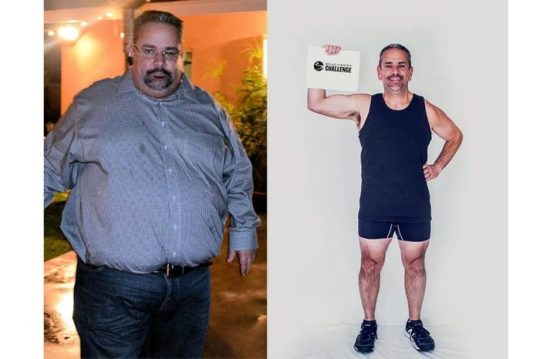
#keto diet#keto#keto diet for beginners#keto diet plan#ketogenic diet#diet#keto diet explained#keto diet plan for weight loss#keto diet results#keto diet meal plan#keto meals#keto food#what is keto diet#what is a keto diet#keto diet recipes#low carb diet#keto recipes#what is the keto diet#how to start keto diet#foods to eat on keto diet#what is keto#is keto safe#foods i can eat on a keto diet#keto weight loss#keto bread#diet keto
0 notes